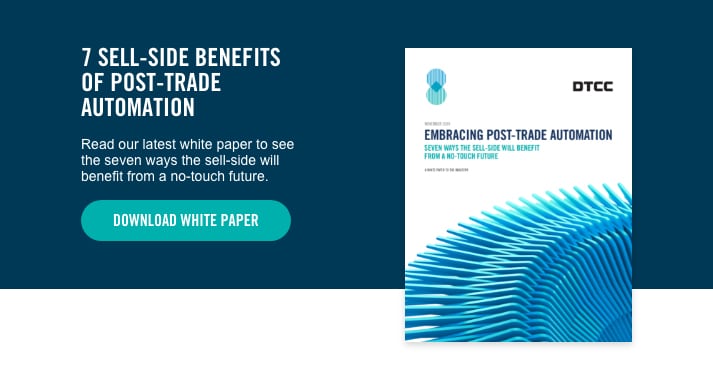Large Broker/Dealers spend in the range of US$150-175 million on post-trade services for cash securities. The sell-side has continued to grapple with shrinking margins and an array of regulatory challenges. By following our best practice guidelines, ITP’s sell-side community can reduce headcount and repair charges, technology expenses, claims and fees. These savings enable firms to optimally scale their trade operations, reduce vulnerability to spikes in volume and prepare for regulatory changes like CSDR in Europe, T+1 in the Americas and the overall focus of the industry on Accelerated Settlement cycles.

Learn more about how we are reducing
complexity for sell-side clients
Increasing global regulatory pressures are impacting the buy side now more than ever. Adhering to emerging regulations like CSDR in Europe and a proposed T+1 settlement cycle in the Americas is magnified by an industry push to reduce operational costs while not adding risk to a firms’ investment strategies. As money managers and hedge funds explore new strategies to create investment growth, they are increasingly becoming dependent on new technology to best support this expansion.
We provide our buy-side community of over 1,300 firms a trusted and resilient platform to increase efficiency and prevent trade failures by managing their full post-trade lifecycle for their entire network of brokers and custodians in one central location.
Learn more about how we are increasing efficiency and
helping to prevent trade failure for our buy-side clients
Custodians play a critical role in helping to ensure the safety of assets in the global financial markets causing specific challenges – including the effects of flat asset growth, increased competition and the impact on earnings as well as evolving regulatory requirements.
DTCC’s ITP services work with our custodian clients to support the key role that they play in the industry by providing them with the tools to achieve true post-trade automation. The consistency and standardization that comes with automation means less exception processing and manual communication and far fewer “touches” per trade – increasing efficiency, data quality and cost savings. This means our custodian community can spend more time providing value-add services to their clients.
Learn more about how automation through a no-touch
workflow is helping our custodian community